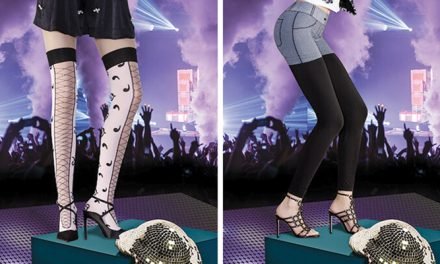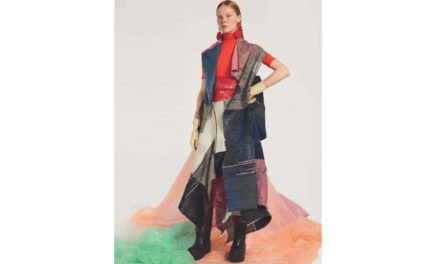 In today’s textile industry, 4-way stretch fabrics have become ubiquitous, catering to various brands from high-fashion to high-street. As the name suggests, these fabrics are renowned for their excellent elasticity, stretching across their length and width, and are used in sportswear, athleisure, and even luxury garments. Among the leading innovators in this domain is Pailung, a Taiwanese knitting machine manufacturer that has revolutionised the concept of 4-way stretch fabrics, setting new standards for quality and sustainability.
In today’s textile industry, 4-way stretch fabrics have become ubiquitous, catering to various brands from high-fashion to high-street. As the name suggests, these fabrics are renowned for their excellent elasticity, stretching across their length and width, and are used in sportswear, athleisure, and even luxury garments. Among the leading innovators in this domain is Pailung, a Taiwanese knitting machine manufacturer that has revolutionised the concept of 4-way stretch fabrics, setting new standards for quality and sustainability.
The evolution of 4-way stretch
This innovative fabric was first introduced to combat the problem of elastic fabrics turning see-through when stretched. Pailung began researching 4-way stretch in 2015, altering the original yarn structure of elastic fabrics to prevent transparency while retaining their flexibility. Since then, one of the world’s leading yoga apparel brands has adopted 4-way stretch, and the technology has continued to evolve thanks to key players like Pailung.
Pailung’s optimised 4-way stretch
After working tirelessly to optimise its technology, Pailung reached several breakthroughs and is now introducing its upgraded 4-way stretch to the industry. At the recent international textile convention ITMA 2023, the brand showcased two types of 4-way stretch fabric, plain and colour jacquard, made using its KD3.2B-W and KD2.5CJB-W machines, respectively.
Pailung has pushed fabric appearance, texture, and overall quality to new heights to satisfy apparel brands’ demands. For example, after much research and fine-tuning, it has practically eliminated barré defects, an enormous pain point for textile manufacturers where horizontal lines spoil fabric’s appearance and colour purity. In addition, Pailung has successfully raised its machine’s gauge to 44, yielding softer, thinner fabric with its improved, smooth hand feel. These two examples alone reinforce the manufacturer’s status as a pioneer within the textile industry.
Ruthless in-house testing
To ensure consistent quality, Pailung’s Open Innovation Lab (OIL) puts fabric through rigorous repeated testing, in line with international standards, to observe its functionality and find areas for improvement. Results from the lab show that the brand has not only solved the original transparency issue, but also elevated the fabric’s elastic recovery rate to over 150%, surpassing industry standards. The OIL found that besides retaining its shape, the fabric also excelled in pilling and snagging tests, with the vast majority reaching level 4.5+ in the latter, a benchmark for high quality. With these tests, Pailung has proven that its 4-way stretch fabrics are highly durable, a key factor in sustainability.
 Color Jacquard 4-way stretch
Color Jacquard 4-way stretch
Besides structural quality, Pailung has worked to expand the design potential, notably with its colour jacquard 4-way stretch.This method uses a jacquard technique to knit up to three colours into intricate patterns, obtaining excellent colour purity and saturation with noticeably less grin through than printing. Additionally, different yarn types can be mixed to allow designers to create fabrics with different functional properties, such as moisture-wicking and breathability.
In contrast to traditional printing – another way to produce patterned fabrics – knitting coloured yarns together directly to create patterns is better for both the consumer and the environment. It reduces energy consumption by cutting the number of finishing steps and produces durable patterns that extend garments’ lifespans. Pailung’s technology also allows designers to meet the growing demand for dyed yarn or dopedyed yarn, which further increase fabric’s colour fastness and durability by preventing dyes from leaking out.
A holistic approach to innovation
Pailung’s commitment to innovation goes beyond the fabric itself, as the company has taken significant strides to enhance production processes. The knitting machines for both plain and colour jacquard 4-way stretch have experienced significant boosts in output capacity, producing more fabric in less time. For plain, Pailung’s KD3.2B-W machine has been ramped up by 25%, while colour jacquard’s KD2.5CJB-W machine has seen increases of 16% compared to its predecessor. This boosted output saves energy during fabric production and helps to improve sustainability within the textile industry.
What’s more, Pailung has released its own programmable continuously variable transmission (PCVT) take-up system. This cutting-edge technology provides multiple winding speed settings for each winding rod from the beginning to the end of the fabric winding. Typically, fabric rolling machines have two axes, an upper and a lower one. In the past, the speeds of the upper and lower axes had to be the same. However, the PCVT now allows the speeds to be independently adjusted, making it more suitable for handling fabrics that are sensitive to tension, especially 4-way stretch.
Versatile application potential
The ground-breaking innovations by Pailung have opened up new applications for 4-way stretch fabrics. They continue to be a popular choice for underwear, and swimwear, and their improved elasticity and texture helps to improve athletic performance in sportswear applications. At the same time, the fabric’s seamless blend of functionality and style has led to an increasing trend in fashion applications. To showcase this potential, Pailung teamed up with Taiwanese designer Justin Chou to release a collection for ITMA 2023. This successful collaboration highlighted the versatility of Pailung’s 4-way stretch fabrics and their potential to revolutionise the fashion industry.





















